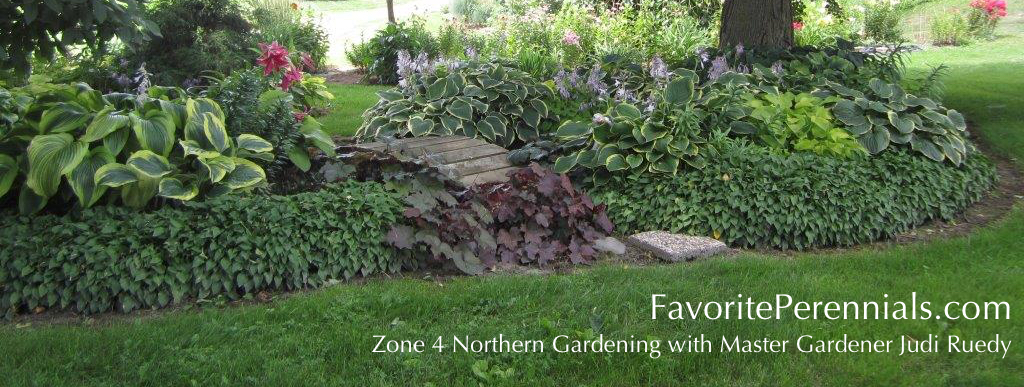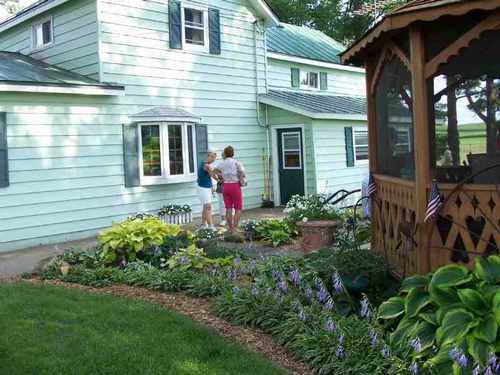Spring Garden Preparation for Zone 4 Gardens
Find out how to prepare your Zone 4 garden for spring by removing mulch and planting seeds. Learn what to do and what not to do with flower bed preparation. You may also want to read about mulching in the fall so your flower beds are ready for spring.
Spring Garden Preparation
March is a month of unknowns in Zone 4 and West Central Wisconsin.
One week it is 50 and 60 degrees and melting snow everywhere, and the next is it freezing rain and snow and 35 degrees. Such is Wisconsin weather for all the years I can remember. As far as that goes, April too, as far back as I can remember. There is a bright note and that is that with the melting snow and the rain, there is green grass in areas.
Trim Your Winter Interest Plants
If you are lucky enough to live in an area that the snow has melted and your lawn has dried out enough to walk on it, you can venture out to cut off the “winter interest” plants that you left last fall, getting an early start on your gardening this spring.
Do Not Step In The Perennial Beds!
However, do not step in the perennial beds or on any soil yet though, as you don’t want to compact the soil and make it hard for the plant roots to breathe later on this summer. If there are any plants that have heaved over winter, gently push them down into the ground again, but only if the soil is thawed so you can do that.
Loosen The Mulch
You can loosen the mulch on the flower beds but don’t remove it. There is plenty of time for that later, when danger of frost is past. This is mulch you would have covered perennials with to protect them from the winter, not shredded bark.
It is hard to believe after the ice and snow of this past week, that in less than a month I could be mowing the lawn! Depending on the temperatures of course.
Patience Is Needed
I can wait. I am in no hurry. It is also hard to believe that everything was once as lush and green as the pictures I see on my website are! I am sure they will be just as gorgeous this summer again.
Now Is The Time To Pot The Dahlias, Calla Lilies, and Tuberous Begonias
If you have Dahlia tubers in storage or ones you have purchased this spring, now is the time to put them in pots in some nice well draining soil to get a good start on bloom time.
I purchased some at our Spring Into Gardening Seminar in March and they are still in the plastic in the refrigerator drawer keeping nicely. Time to get them in the pots as soon as I purchase some soil.
You can also start Calla Lilies early in pots too. As well as the Tuberous Begonias.
This will be a learning year for me with the dahlias, as I have never grown them before. They need full sun and I don’t have very much of that.
Time To Plant Seeds
If you plant seeds you should be getting them started soon also if you haven’t already. I plan to try starting some easy to grow Zinnias this spring indoors.


I hope you don’t mind my reaching out to you but I found your website today and find it easy to read. We recently moved into a new home out in the country – on property with lots of sun. We did put down some shrubs when we moved in but I am not pleased and want to redo, simple and easy to maintain. I really like the following shrubs and wanted to ask your opinion on blending around the front of my home-
-hostas
-nandina
-indian hawthorne
-loepedlum
-henna coleus
-evergreen juniper
Thank you so much.
MR
Hi Margie,
Thank you for checking out my website. Glad you find it easy to read too!
Okay, first, what zone are you in? What state too? Is this a Southern exposure or Northern, etc.?
I checked on Nandina as I wasn’t familiar with it and it is a Bamboo. Hardy to zone 6. Not 4 or 5. Bamboo is invasive usually and this one says it can be poisonous to birds that eat the berries, or to cats also.
The Indian Hawthorne is hardy in zone 8-11 so if you are farther north than that, it won’t live. It likes a sunny site and if it is heavy clay or sandy soil where you plant it, work in a few bags of compost a couple of feet deep.
Snowdance Loepedlum is a dense compact shrub. This too is zone 7-10 for hardiness. (I sure hope you live in a southern state with all these plants!) It likes a sunny spot and needs compost rich soil.
Henna is a small tree that grows from 6-25 feet tall. It won’t like temperatures below 52 degrees, so again, deep south I think.
Evergreen junipers are drought tolerant and low maintenance. They are hardy to zone 5 and like a sunny spot and have few pest problems.
More information can be found on the internet by typing in each of these names and reading up on the particular variety of each. Especially the junipers have many varieties.
Hosta and coleus will grow in hot conditions, but do much better with shade. If you have a very hot area you are planning, and want them, you have to water them much more. Or, plant them in large pots where you can keep an eye on the water amount better. I am thinking 24-30 inch pots to be sure there is plenty of soil for the Hosta, especially. I hope I have helped you with some of your questions. Please let me know if I can answer any more. Judi